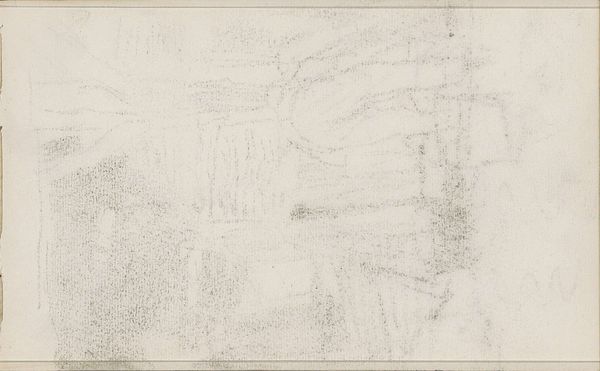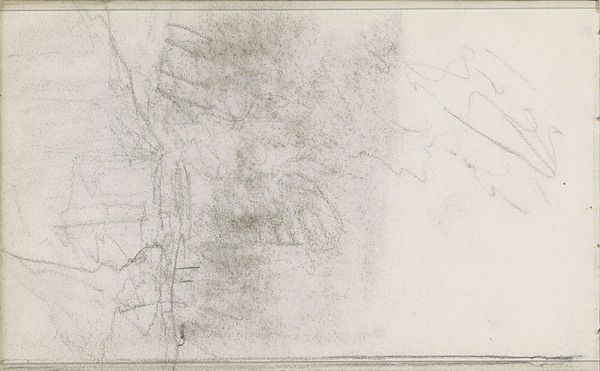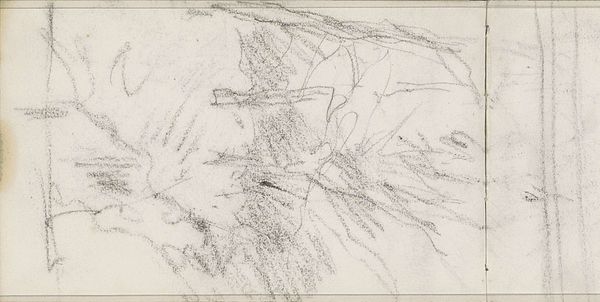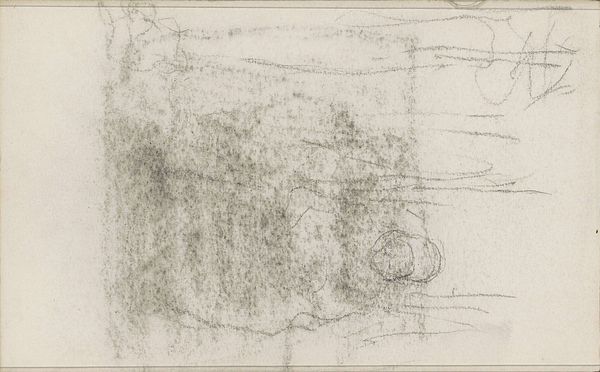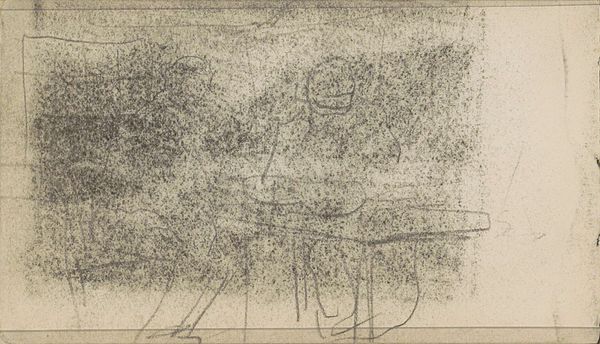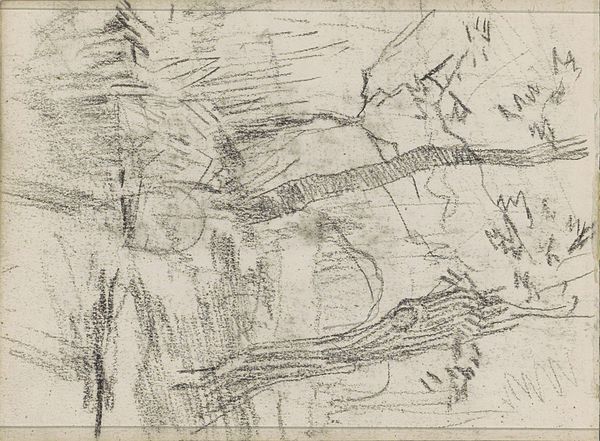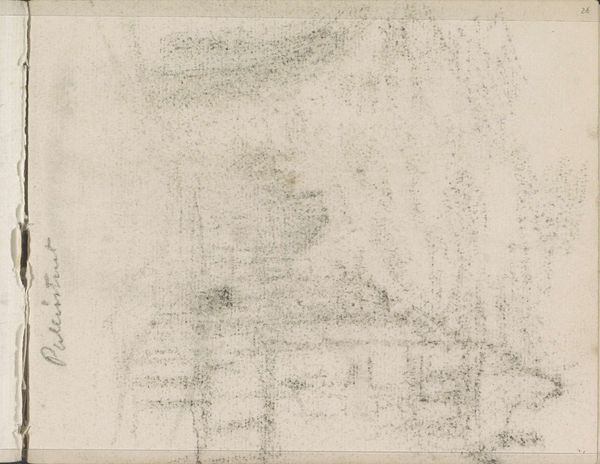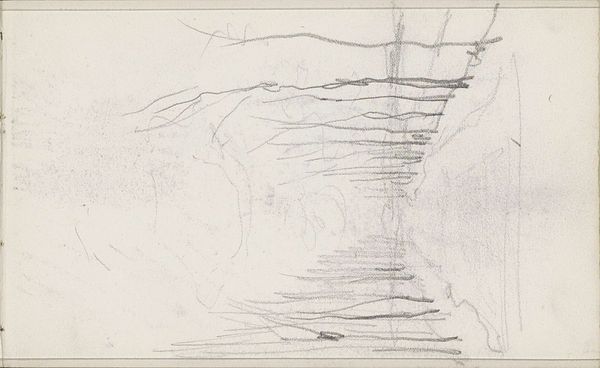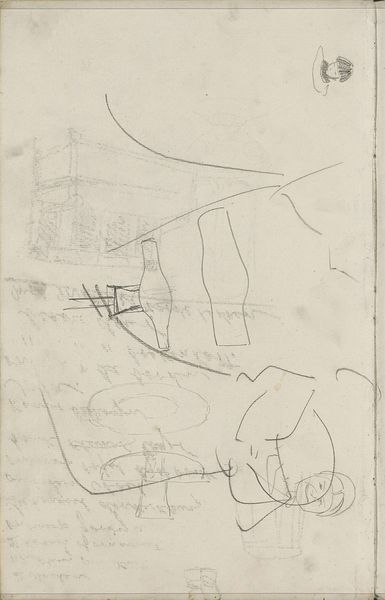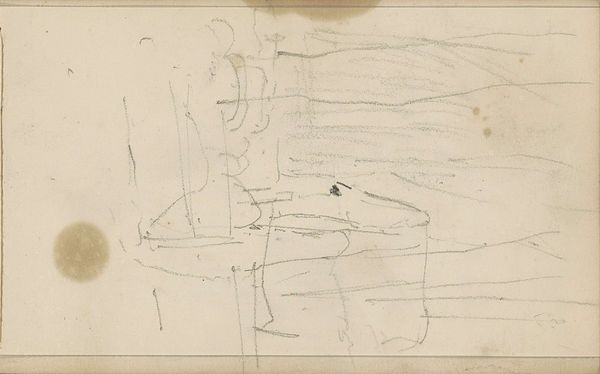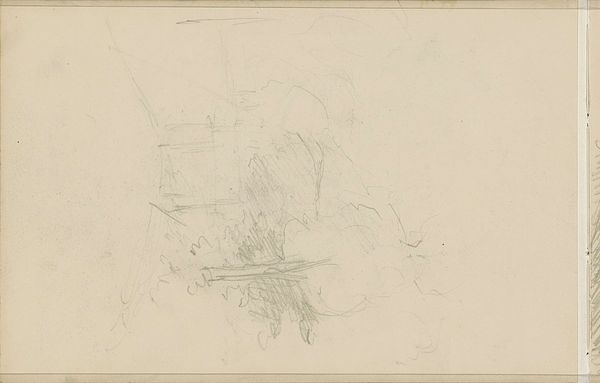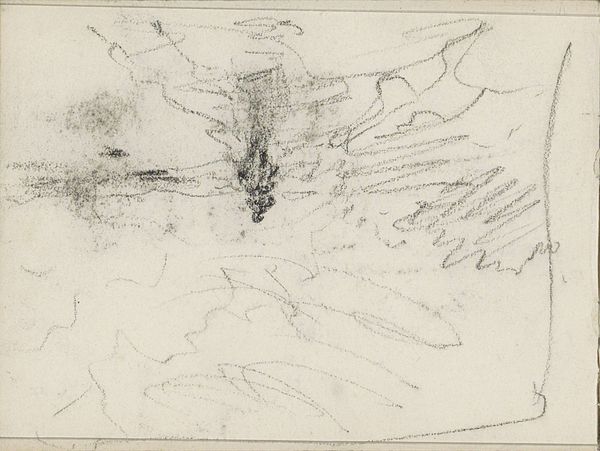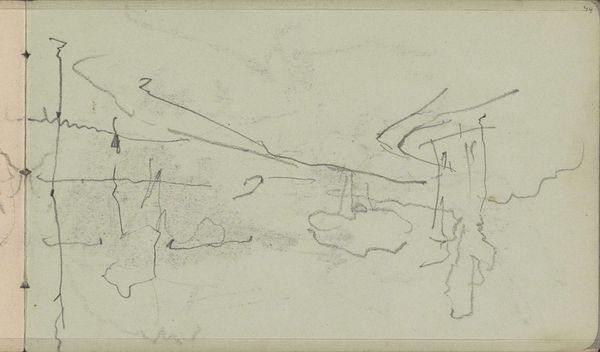
drawing, pencil
#
drawing
#
impressionism
#
landscape
#
pencil
#
realism
Copyright: Rijks Museum: Open Domain
Curator: We’re standing now before "Studie," a pencil drawing created sometime between 1848 and 1888 by the Dutch artist Anton Mauve, and currently residing here at the Rijksmuseum. Editor: My first impression is of a fragile and fleeting scene—almost like a memory trying to surface. The muted grey scale amplifies this sense of ethereality, hinting at landscapes, or maybe figures, without fully revealing them. It has the quiet intimacy of a journal entry. Curator: Indeed. This piece gives us a direct insight into Mauve's working methods. As a leading figure of the Hague School, Mauve’s landscapes reflect a broader artistic focus on the Dutch countryside, specifically concerning social commentary about industrial development. Editor: I see that social commentary, yes, in the muted palette; a melancholic response. Mauve has employed these subtle washes and deliberate incompleteness to capture what? Some disquiet, as it sits on the periphery between nature and culture? There's a liminality there that speaks to contemporary concerns surrounding ecological precarity. Curator: Precisely! Think of the influence of the Barbizon school, particularly regarding the unvarnished representation of nature. Also, remember that museums and academies at this time favored history painting; and this kind of unpolished style represented new ways of relating with land, art, and society. Editor: So, even in what feels like its nascent state, "Studie" carries weight! In today's context, one may use this to reflect on our own fast-paced world where the sketches of memory and nature are constantly obscured. It's almost an ode to intentional slowing. Curator: Very well stated. As a preliminary sketch, its significance also lies in allowing us to engage with the artistic process. "Studie" pushes against established expectations, highlighting a deeper narrative within the landscape tradition itself. Editor: Agreed. By revealing the art-making itself, we expose not only skill and method but also the societal conversations that inform the artist’s view and decisions, especially relevant during intense political debate concerning industrial society. Thank you. Curator: Thank you as well, for reminding us to look through time in that context, both back at its making and to consider its social significance, from then and now.
Comments
No comments
Be the first to comment and join the conversation on the ultimate creative platform.
